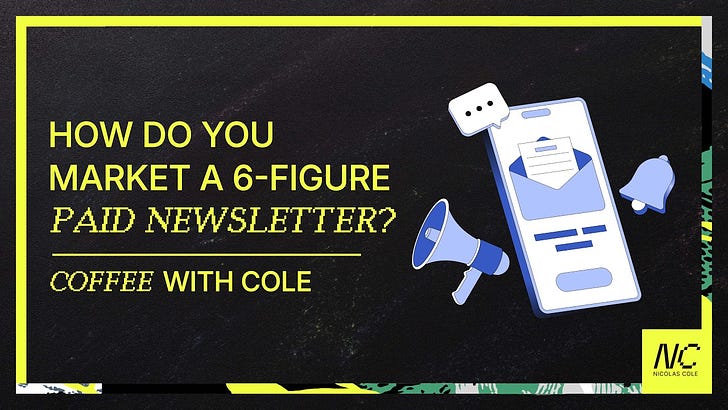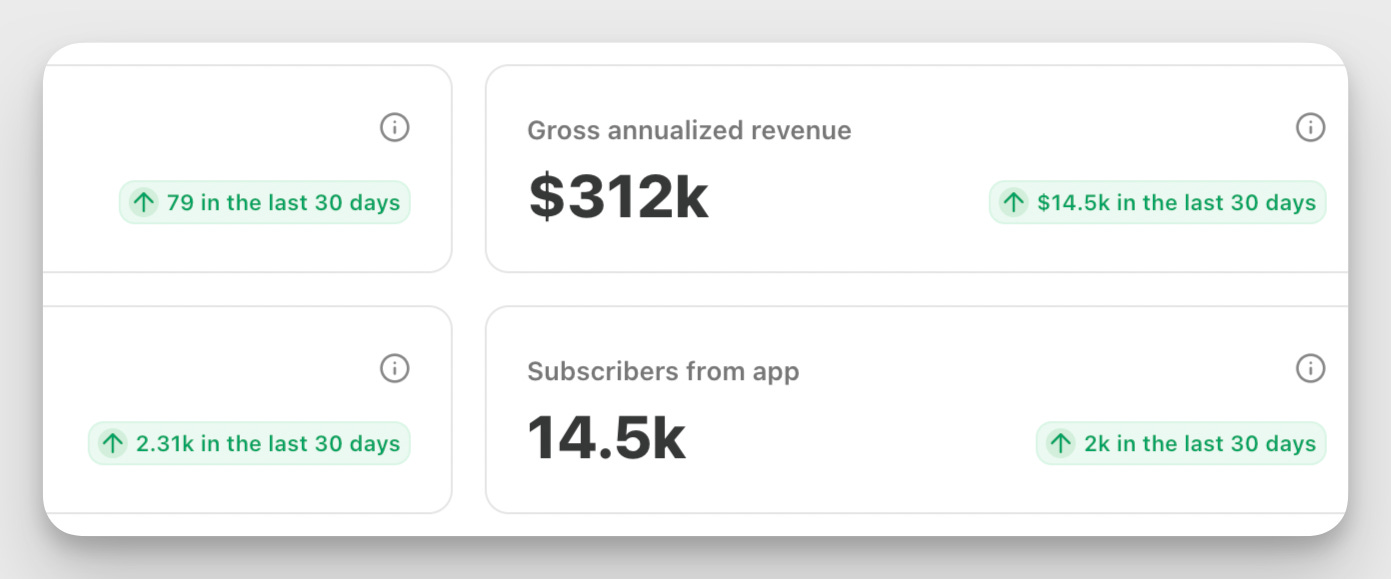Write With AI just crossed $300,000 in annual recurring revenue, and today, I’m going to walk you through the exact marketing tactics we used to get there.
Here’s what's in store:
Our 3-step paid newsletter business model
When to choose Substack, ConvertKit, or Beehiiv
3 tactics to convert subs from free to paid (Claude prompt)
A dead-simple newsletter funnel to newsletter drives sign-ups
Let’s dive in.
The 3-Step Newsletter Supply Chain
To market a successful paid newsletter, you need to first understand the structure of the business model.
Think of it as a supply chain. It all starts with generating free content.
Here’s the flow:
Free Content Creation: You need to be writing somewhere for free—whether it’s X, LinkedIn, Instagram, or any other platform. The goal here is to build traffic.
Convert to Free Newsletter Subscribers: From your social platforms, you drive traffic to your free newsletter. The goal is twofold: (1) to show that you can provide more value than what’s available on social, and (2) to get people onto your email list so you can eventually upsell them to paid content.
Free-to-Paid Conversion: Once someone is subscribed to your free newsletter, your job is to convince them to upgrade to the paid version by offering exclusive content or expert insights that they can’t get anywhere else.
Most paid newsletters offer one of two types of content: exclusive or expert.
Either you’re giving subscribers access to insider information, research, or behind-the-scenes insights that aren’t shared publicly, or you’re positioning yourself as an expert with decades of experience, delivering knowledge they couldn’t get elsewhere.
How To Choose The Right Newsletter Platform (Substack vs ConvertKit vs Beehiiv)
The next most common question to building a paid newsletter is, “Which platform should I use?”
Let me break it down:
Substack: This is where we host Write With AI. We chose Substack because it acts as a unified feed for both free and paid issues, allowing free subscribers to see what they’re missing behind the paywall. Additionally, Substack has a built-in community element and a recommendation engine that drives new subscribers. In fact, 20% of our paid subscribers come directly from Substack’s internal recommendation engine.
ConvertKit: If you’re planning to build a full digital products business with upsells, email courses, and funnels, ConvertKit is a better option. It has more advanced features for digital product marketing—think FOMO sequences, abandoned cart reminders, etc. We use ConvertKit for other projects like Ship 30 for 30 and PGA, but for a straightforward paid newsletter, you don’t need all of these advanced features.
Beehiiv: If you’re leaning toward building a full-fledged publication rather than just a newsletter, Beehiiv is worth considering. Beehiiv is particularly strong for landing pages and publication-style newsletters, as evidenced by the success of Milk Road (a crypto newsletter built on Beehiiv).
So, in short: Substack for simple paid newsletters, ConvertKit for advanced digital product businesses, and Beehiiv for full publications.
Your Newsletter Publishing Cadence
A simple cadence that works for most paid newsletters is:
One free newsletter per week for marketing and growth.
One paid newsletter per week as the core product.
The free newsletter serves as your marketing engine, introducing potential subscribers to your paid content. Meanwhile, the paid newsletter is the actual product they’re buying into.
The publishing cadence depends on the value you're promising.
For example, if you're delivering short, actionable stock tips, you might want to send daily newsletters. If you're writing long, detailed insights (like Category Pirates, which I co-founded), a bi-weekly cadence might make more sense.
Want help building your publishing calendar?
Click here for a 90-Day Content Planner.
One key benefit of the paid newsletter model is that the longer you keep producing content, the more valuable your archive becomes. Each new paying subscriber gets access to not just the next newsletter you send but all of the previous ones behind the paywall.
Over time, this compounds the value of your offering and makes it easier to sell.
How to Upsell Free Readers To Paid Subscribers (3 Simple Techniques You Can Start From Day 1)
This is where we get tactical.
The most effective way to convert free subscribers to paying customers is to send snippets of your paid content to your free list. Substack has a feature where you can insert a paywall 25-30% of the way into a newsletter.
Here’s the 3-part strategy:
Send Snippets: Every time we send a paid issue, we intentionally place the paywall about 25-30% down, then send the newsletter to both the paid and free lists. Paid subscribers get the full issue, and free subscribers see a teaser with a paywall. This reminds them that you have something for sale.
Cliffhanger Paywalls: Instead of arbitrarily placing the paywall, insert it at a moment of high tension—right before revealing a valuable insight, framework, or checklist. This creates a "FOMO" effect, making the free subscriber feel like they're missing out on something crucial. When we do this intentionally, we see much higher conversion rates.
Want to know exactly how to implement these strategies? I've created an AI prompt that will help you transform any newsletter into a conversion machine.
🔓 For paid subscribers only:
Keep reading with a 7-day free trial
Subscribe to Write With AI to keep reading this post and get 7 days of free access to the full post archives.








